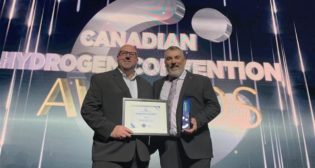
Transit Briefs: Honolulu DTS, NJ Transit, SCVTA, TransLink
Written by Marybeth Luczak, Executive Editor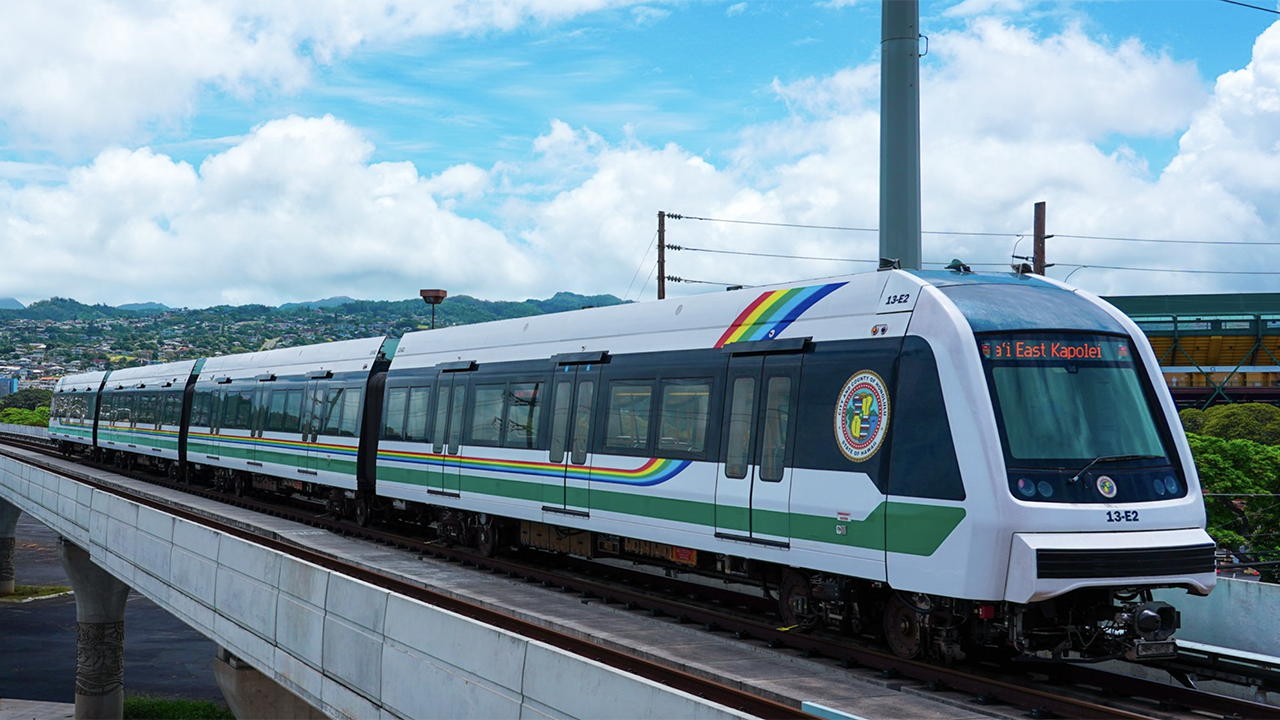
The initial operating segment of Skyline—the Honolulu (Hawaii) Rail Project—comprises 10.75 miles of guideway and nine stations from East Kapolei to Hālawa Aloha Stadium. It opens June 30. (Pictured: Hālawa Aloha Stadium Skyline Station, Courtesy of City and County of Honolulu DTS.)
The City and County of Honolulu Department of Transportation Services (DTS) reveals the official name of its soon-to-open rail system. Also, New Jersey Transit selects a commissioning agent for its Distributed Generation Program; Santa Clara Valley Transportation Authority (SCVTA) develops a resource program to support small businesses during BART Silicon Valley Phase II Extension Project construction; and metro Vancouver’s TransLink adds another trainset, including a newly refurbished locomotive, to West Coast Express commuter rail service.
Honolulu Mayor Rick Blangiardi and the City and County of Honolulu DTS on June 16 announced the official name and branding of Honolulu’s new rail system: Skyline. It was one of many naming options studied to best represent the line, which will offer riders “expansive views from the mountains to the ocean,” they said.
Skyline’s 10.75-mile opening segment between Kualakaʻi East Kapolei Station and Hālawa Aloha Stadium Station (see map below) is slated to launch June 30. Service to additional stations further east along Oʻahu’s South Shore to Kalihi and Honolulu’s Civic Center in Kakaʻako is scheduled to commence in phases over the coming years.
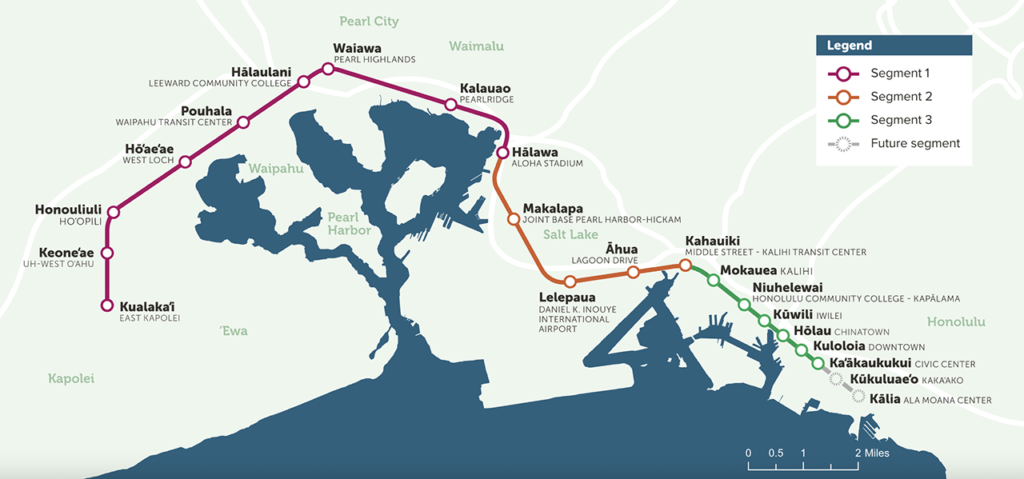
Skyline will prominently feature images of the Manu o Kū, or white tern, a protected native seabird found on the South Shore of Oʻahu, reported the City and County of Honolulu DTS, which is responsible for Skyline operation and maintenance.
Three limited-edition HOLO fare card designs featuring the bird (below) will be available before the start of service at select retail partners.
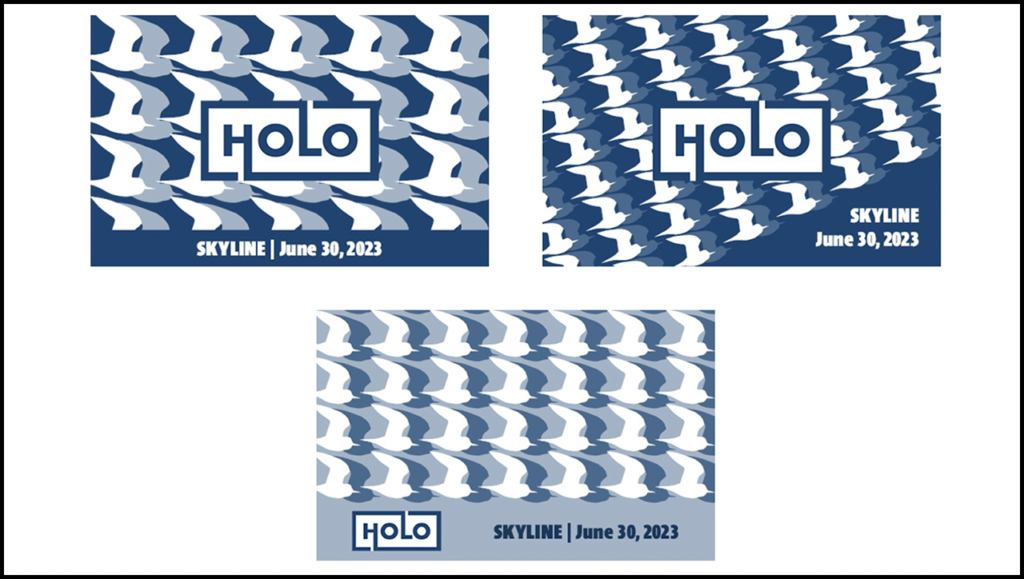
Skyline will operate from 2 p.m. until 6 p.m. on June 30. Full regular service starts July 1. Skyline will run 5 a.m. to 7 p.m. on weekdays and 8 a.m. to 7 p.m. on weekends and city holidays. The City and County of Honolulu DTS reported that it will offer free rides on Skyline, TheBus and TheHandi-Van from July 1 through July 4.
Earlier this month, the Honolulu Authority for Rapid Transportation reported completing construction and delivering Skyline’s initial operating segment to the City and County of Honolulu DTS.
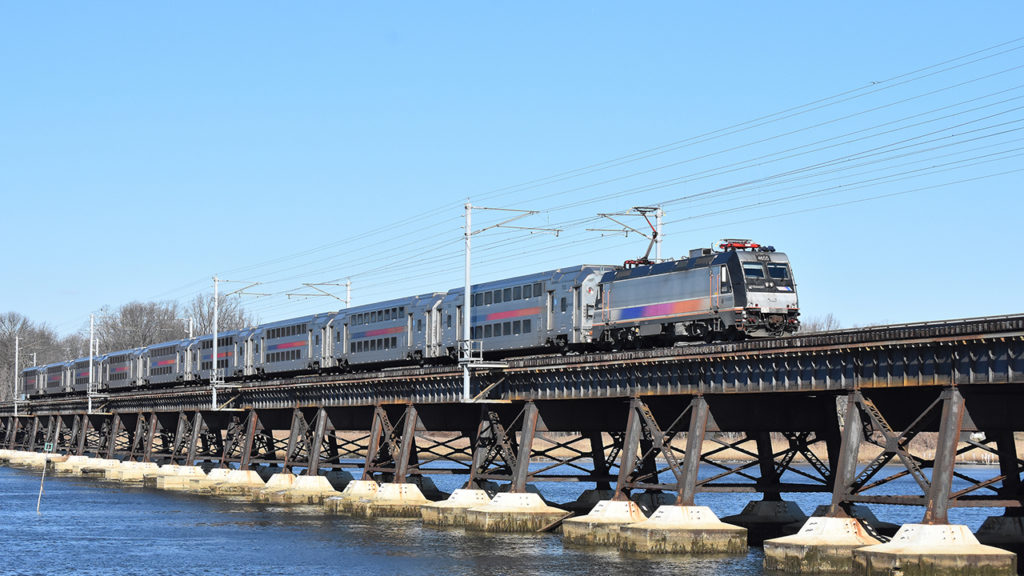
FST Technical Services (FST) on June 19 reported that it will serve as commissioning agent for New Jersey Transit’s Distributed Generation Program—part of NJ TRANSITGRID—which was established after 2012’s Superstorm Sandy.
With a $570 million budget, the project aims to provide backup power for bus, ferry and limited passenger rail service during natural or man-made disasters, according to FST, a professional services firm specializing in commissioning, life sciences and technical services. The scope of the commissioning, it said, will include services through the design phase, construction phase, post acceptance phase, and the warranty period with actual verification of performance.
In the event of a power outage, distributed generation upgrades will ensure at minimum two weeks of operations for six New Jersey Transit locations: Greenville Bus Maintenance Facility; Meadowlands Bus Maintenance Facility; Newark Broad Street Station; Port Imperial Ferry Station; Secaucus Junction Station; and Wayne Bus Maintenance Facility, according to Burns, which is providing construction management services for the Distributed Generation Program.

SCVTA has developed a Business Resource Program ahead of major construction for its BART (San Francisco Bay Area Rapid Transit District) Silicon Valley Phase II Extension Project.
The six-mile extension project in California—which includes three underground stations (28th Street/Little Portugal, Downtown San José, and Diridon), one at-grade station (Santa Clara), a maintenance facility, and five miles of subway tunnel—will expand BART service from the Berryessa Transit Center in northeast San José through downtown San José into the city of Santa Clara (see map below). SCVTA is the funding agency and will manage the delivery of the project, while BART is system operator and maintainer. (The 10-mile BART Phase I Berryessa Extension Project opened in 2020; it begins south of BART’s Warm Springs Station in Fremont, proceeds through Milpitas and ends in the Berryessa area of north San José.)
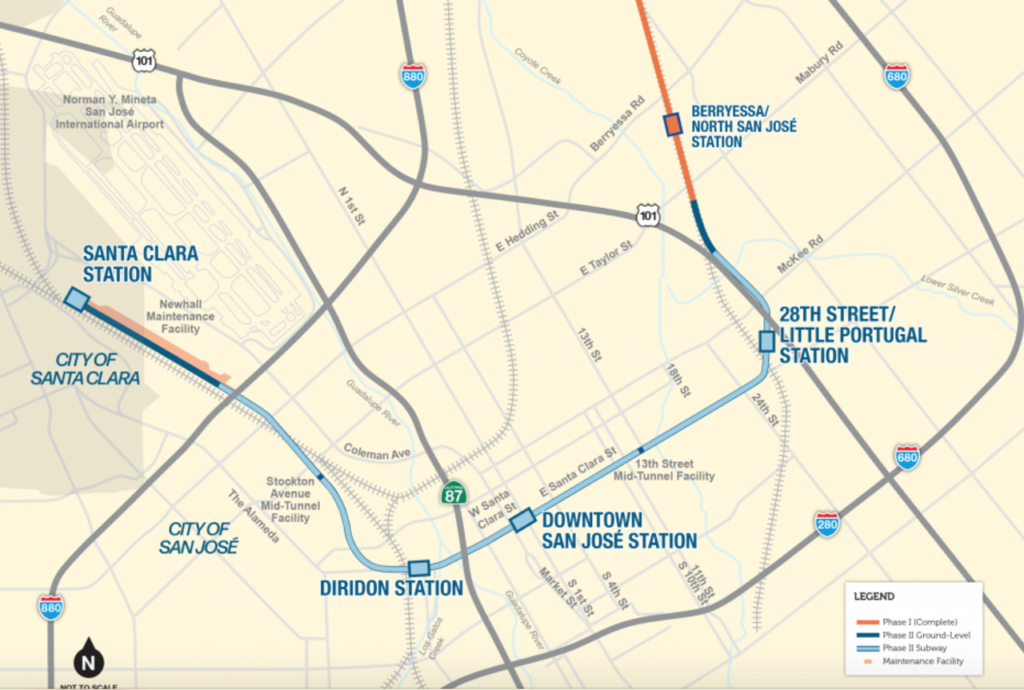
“Although most of the work will occur behind construction fences, there will be increased truck traffic and sidewalk and parking restrictions when construction starts [next year],” SCVTA reported June 14. To help alleviate the disruption to businesses, SCVTA’s Business Resource Program will support the small-business community through:
- “Shop Local” Marketing: This branded strategy will promote businesses in the construction area.
- Signage and Wayfinding: This program will help direct patrons to small businesses. According to SCVTA, it will be coordinated with other construction and wayfinding signage.
- Small Business Resource Connections and Support: This program will offer a range of services and training to help businesses “improve their resiliency,” according to SCVTA.
- Direct Financial Assistance: This program will provide targeted grant funding to eligible small businesses that have directly experienced construction-related business disruptions.
Additionally, a multi-lingual Business Liaison Team will address overall business support and outreach efforts by serving as a direct communication resource between SCVTA’s BART Silicon Valley Phase II Extension Project team and the community.
The Business Resource Program was developed in conjunction with the Small Business Task Force of SCVTA’s BART Silicon Valley Phase II Extension Project and the cities of Santa Clara and San José, and it incorporates the many lessons learned from projects built around the country, according to SCVTA.
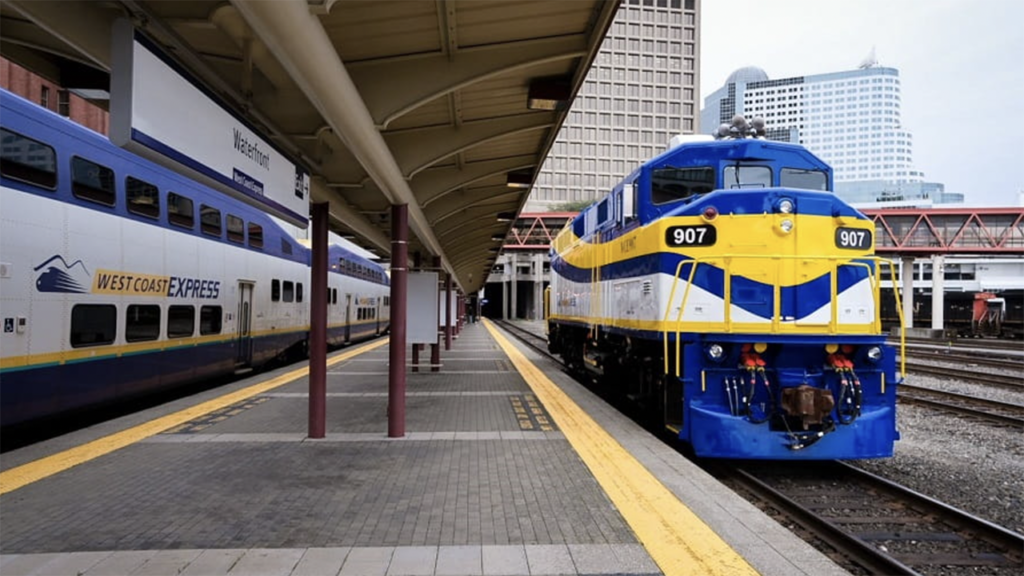
West Coast Express commuter rail service was restored to pre-pandemic levels with the introduction of a fifth train on June 19, according to TransLink, which is responsible for planning, financing and managing transportation modes and services in the metro Vancouver region. The train offers two trips per weekday and includes a newly updated locomotive—the first of six to be refurbished by 2026 as part of a project announced in 2021 and co-funded by the government of Canada, government of British Columbia and TransLink. According to TransLink, the updated, freshly painted locomotives will reduce engine emissions by up to 50% and provide an additional 15 years of service life.
West Coast Express is a weekday commuter rail service that runs 42 miles between Mission and Vancouver. With 116,000 boardings in May 2023, ridership increased nearly 55% over May 2022, according to TransLink.
“The West Coast Express has been moving thousands of metro Vancouver residents for nearly 30 years, and we are pleased to put five trains back in service for the first time since 2020,” TransLink CEO Kevin Quinn said. “Over the past several months, we’ve seen ridership on the service steadily increase and we’re taking steps to keep it a reliable transit experience for our customers across the region.”
